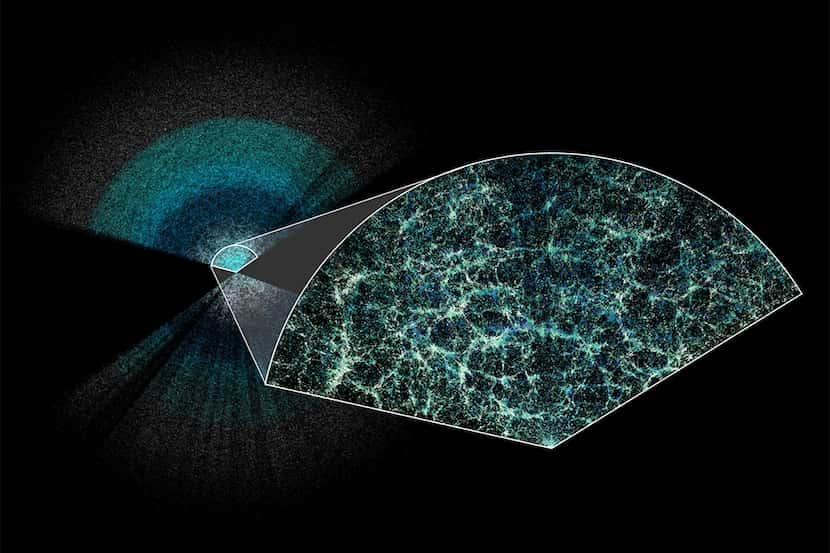An astrophysicist from the University of Texas at Dallas is working to shed light on one of the universe’s biggest mysteries: dark energy.
This elusive component — while unseen — plays a crucial role in shaping the cosmos. It tells us about how the universe evolved from its infancy to its current state, while also hinting at its potential future trajectory.
Physics professor Mustapha Ishak-Boushaki is among more than 900 researchers who comprise the Dark Energy Spectroscopic Instrument (DESI) collaboration, a group examining light from the farthest corners of space to determine how these forces affect the evolution of the universe — specifically, how it is expanding.
Ishak-Boushaki presented findings from the team’s data collection over the last year at an April 4 meeting of the American Physical Society in Sacramento, Calif., along with two other scientists.

“DESI found hints that a characteristic of this dark energy changes over time. This would mean that this is not a cosmological constant,” Ishak-Boushaki said in a phone interview. “This has been a mystery for 25 years. This discovery opens the door for us to go after it and learn more about its nature.”
The research group says it has created the largest 3D map of the universe ever constructed, spanning over 11 billion years. It is the first time scientists have been able to measure the expansion of the early universe with an accuracy better than 1%, Ishak-Boushaki said. The instrument used in this research is located at Kitt Peak National Observatory in Arizona.
Observable celestial phenomena — galaxies, stars and comets — represent only a fraction of the cosmic puzzle. According to the National Aeronautics and Space Administration, “there’s more to the universe than the matter we can see. Dark matter and dark energy are mysterious substances that affect and shape the cosmos, and scientists are still trying to figure them out.”
Dark matter is an invisible substance that scientists believe influences the motion of celestial bodies. Its presence is inferred through gravitational effects, such as the rotation of galaxies and the bending of light.
Dark energy, on the other hand, seems to push galaxies away from each other at an ever-increasing rate. This is thought to be responsible for the accelerating expansion of the universe, a 1998 discovery that earned the Nobel Prize in physics in 2011 through observations of distant star explosions. The supernovae emitted less light than expected, indicating the universe was expanding faster than previously thought.
Although more work needs to be done, Ishak-Boushaki said these findings may indicate that physicists need to modify Einstein’s theory of gravity at large scales in the universe.
“The fact that this dark energy parameter changes in time means that the acceleration of expansion may happen in a different way than thought before,” he said. “If this result grows in significance, this is a very important result for the entire cosmology and physics scientific communities.”
Science reporting at The Dallas Morning News is supported by the University of Texas at Dallas. The News makes all editorial decisions.










